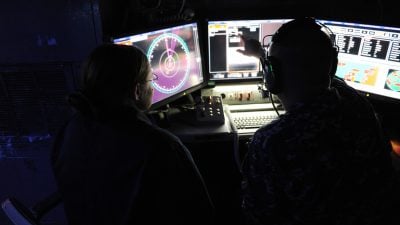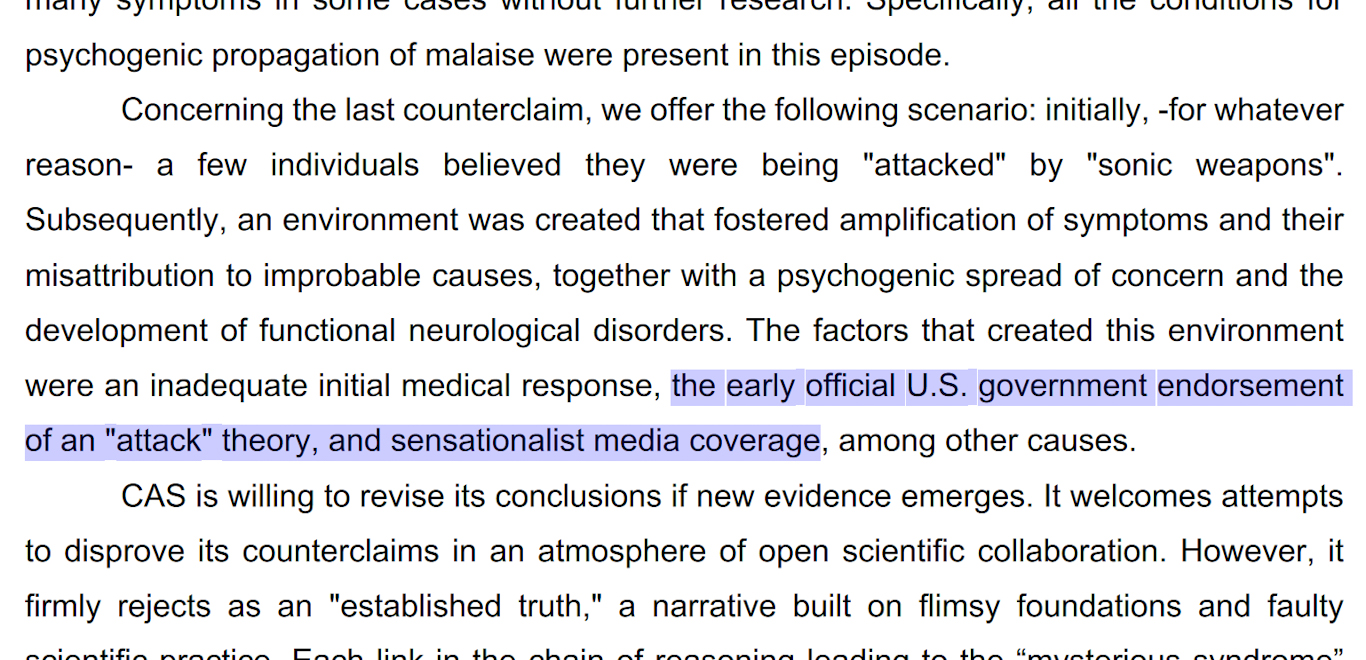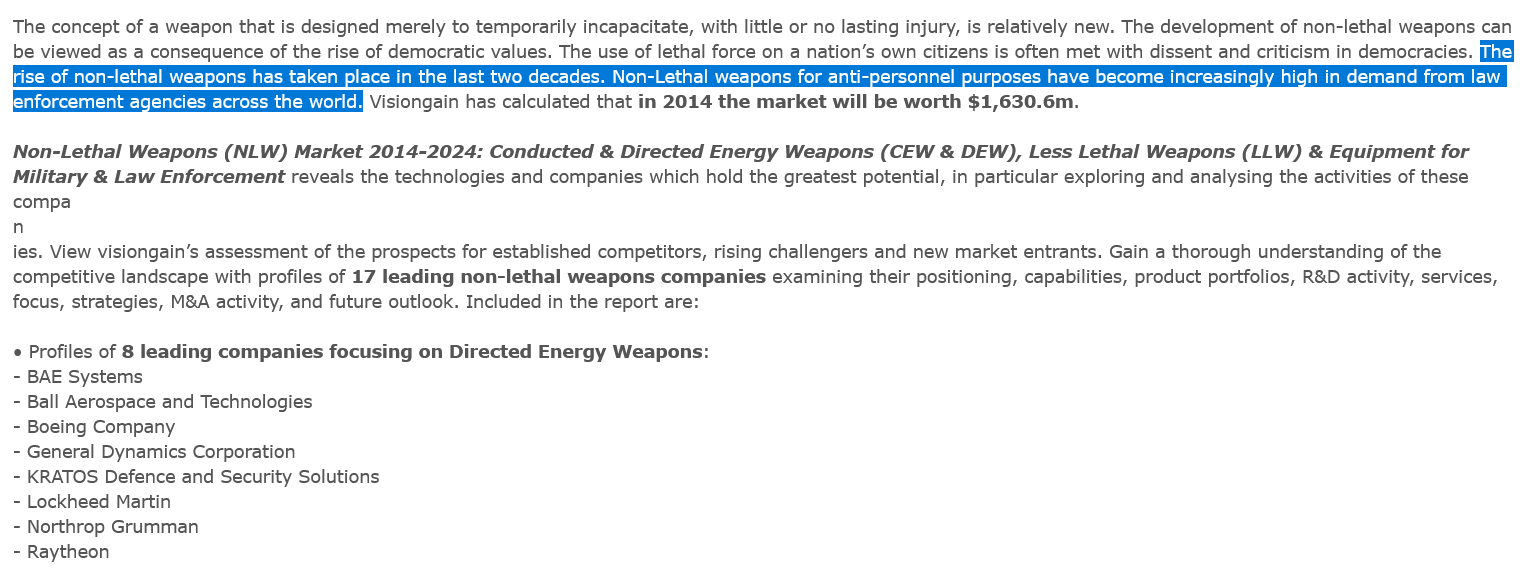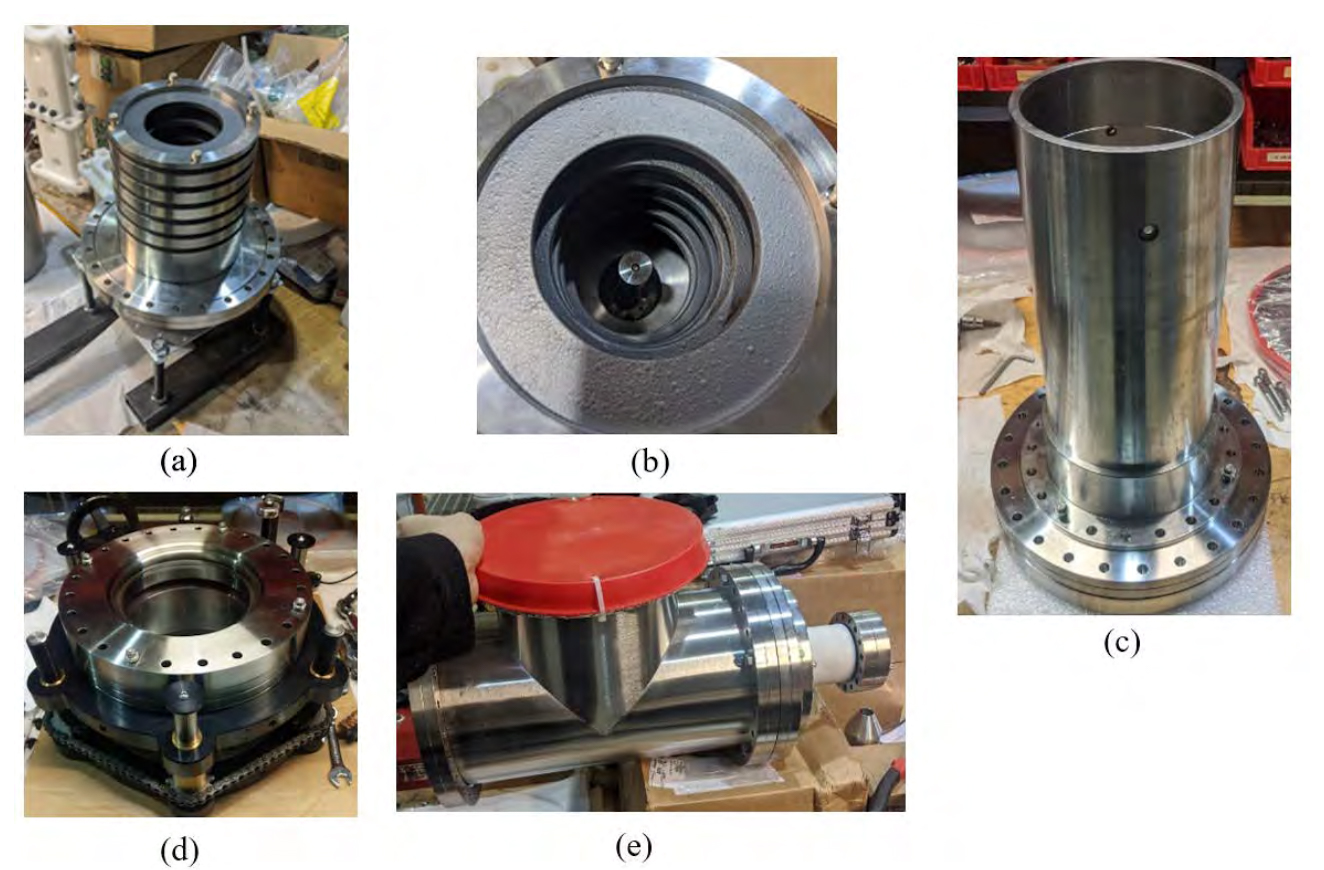Havana Syndrome, Directed Energy Weapons, and the New Cold War

All Global Research articles can be read in 51 languages by activating the “Translate Website” drop down menu on the top banner of our home page (Desktop version).
Visit and follow us on Instagram at @crg_globalresearch.
***
While the jury is still out on who committed the attacks against U.S. officials, or even whether there were any attacks at all, directed energy weapons certainly do exist. Havana Syndrome might be science fiction, but directed energy weapons are very much science fact.
It started in 2016. U.S. officials in Havana, Cuba, began complaining en masse about hearing strange noises, suffering recurring headaches, nausea, hearing and memory loss. From there it spread around the world, with hundreds of U.S. spies and diplomats in the United Kingdom, Colombia, China, Uzbekistan, Germany, Austria, and in Washington itself reporting similar symptoms. Very little about the cases — even the identities of those involved — can be verified. Nevertheless, the story has become a media sensation, appearing on front pages the world over, with journalists speculating that futuristic microwave weapons are the culprit, likely wielded by devious Russian spies. While the scientific and medical community have cautioned not to jump to conclusions, underlining a number of key flaws in the narrative, the existence of directed energy weapons (DEWs), as they are known, is beyond doubt.
Our men in Havana
Tensions with Cuba are high, the island being the home to many cloak-and-dagger plots both by and against the Cuban government, ever since the revolution of 1959, which marked the Caribbean nation as an enemy of Washington. Officials affected typically report hearing a grating sound coming from a particular direction and experiencing pressure in their heads. Those nearby were not affected. The Cuban government’s vehement denials, as well as their openness in helping the U.S. with their investigations, shifted suspicion away from them in Washington’s eyes, the chief culprit assumed by many to be Vladimir Putin’s Russia, although little public evidence of this exists.
From there, officials around the world began to report similar symptoms. Some, like one CIA agent stationed in Moscow, claim to have been debilitated from it. The Biden administration has taken the reports seriously. “The president and I are committed to getting to the bottom of this,” Secretary of State Anthony Blinken said in June. Later this summer, Vice-President Harris’ official trip to Vietnam was delayed after a suspected outbreak of Havana Syndrome in Hanoi. Earlier this month, Blinken scheduled a meeting with 41 diplomats who have been afflicted.
The news of American agents being secretly targeted has created an ongoing media furor. “CIA analysts who are Russia experts, diplomats and scientists contend that evidence points to Moscow,” wrote The New York Times. “Biden must call out Putin’s secret war against the United States,” demanded The Washington Post’s editorial board. Other big media outlets have peppered their coverage of the Havana Syndrome with pictures of the Kremlin, suggesting an iron-clad link to Moscow.
No smoking microwave gun
There is, however, considerable reason to be skeptical of all this, not least because the CIA showed reluctance to release information about those affected, even to other government departments. Then-Director of the agency Gina Haspel was reportedly unconvinced even that any attacks had occurred, let alone that Russia was responsible. An FBI investigation into the phenomenon concluded that those involved were suffering from a mass psychogenic illness (MPI), a condition where a group of people all suffer from similar conditions at the same time despite there being no logical cause — akin to a mass hysteria. Likewise, the Cuban Academy of Sciences concluded last week that the idea of a microwave attack was “not scientifically acceptable in any of its components,” and has survived largely because of “sensationalist media coverage” and a “biased use of science.”

The Cuban Academy of Sciences blamed the US gov’t and media endorsement of the attack theory in part for the MPI
Furthermore, most of the reports are based on accounts from anonymous agents working in organizations whose job it is to plant false information into the public domain. MintPress contacted a number of officials claiming to have been struck down with Havana Syndrome, including a CIA operative and a former embassy intern, but none responded.
“Nobody has detected microwaves, acoustic waves, etc. that could cause the symptoms. The issue is not resolved nor is it likely to be unless more information is forthcoming,” Kenneth Foster, Professor Emeritus of Bioengineering at the University of Pennsylvania, told MintPress, adding:
I have been unable to come up with a plausible exposure scenario where pulsed microwaves could produce the reported effects. So far more than 300 people around the world have reported ‘symptoms’ and it is beyond belief that someone could be beaming microwaves at them at sufficient intensity to produce effects without it being noticed.”
Sergio Della Sala, Professor of Human Cognitive Neuroscience at the University of Edinburgh, shared some of Professor Foster’s suspicions. “This story is very interesting, as it enters the realm of widely accepted truth with almost no evidential basis, and it reads as a modern era spy story, with all the elements of mystery and betrayal,” he told MintPress.
Bad science
A 2018 study published in The Journal of the American Medical Association (JAMA) did a great deal to legitimize the theory of a microwave attack. The study found evidence of neurological impairment in a number of diplomats who claimed to be suffering from the mystery ailment. Although it did not determine the cause of the injuries, its main author considers microwaves to be the “main suspect.”
The news elicited a torrent of media coverage. However, the report was littered with poor methodology, as Della Sala and others were quick to point out. Among the most questionable decisions was to qualify anyone scoring below the 40th percentile in various cognitive tests as “impaired.” In plain English, those performing worse than 60% of adults would be labeled as impaired — an extremely generous definition of injury. Despite this, only 28% of those tested scored below this line, considerably fewer than would be expected if participants were simply picked at random. Della Sala commented:
I looked at the data made available. The data do not support the existence of a new syndrome. Anyone assessed using those criteria could [appear to be] pathological, it is a statistical fact. There is no common, homogeneous pattern that distinguishes the patients from the controls. Hence, if there is no syndrome, it is rather vain to [have a discussion] about its potential causes, which could be multifarious.
If people claim to have seen a donkey flying, the discussion ensuing is how would this be possible; however first we would need to ascertain whether it is true that donkeys can fly. There are several cases of similar psychological reactions to stressful events. These potential causes should also be seriously considered.”
Others were even more scathing. Academics from around the world condemned JAMA for dabbling in a “conspiracy theory.” Neuroscience and neurology journal Cortex suggested JAMA retract the article. One paper reviewing the study concluded that the evidence “all points to mass psychogenic illness exacerbated by mundane sounds and Cold War beliefs.” It was later revealed that a peer reviewer of the article had recommended JAMA reject the study owing to its numerous flaws. Why it was published at all remains a mystery, although Della Sala speculated that it might have been “dictated by a political agenda.”
At this point, I began wondering – how did this paper even get past peer review?! And the answer is – it almost didn't! UCLA neurologist Bob Baloh peer reviewed it and recommended rejection (excerpts from Baloh's book on the case, co-authored with journo Robert Bartholomew) pic.twitter.com/xigIYUY64w
— Natalie Shure (@nataliesurely) October 26, 2020
Two years after the JAMA study, the National Academies of Sciences, Engineering and Medicine released a report that suggested the symptoms displayed by U.S. government workers there were consistent with those of exposure to microwave energy, although it very prominently warned that “evidence has been lacking, no hypothesis has been proven and the circumstances remain unclear.” This added more fuel to the public speculation that Russia was secretly attacking us.
Like the JAMA study, the report was also heavily criticized by academics. Alberto Espay, a neurologist from the University of Cincinnati, described it as “the closest equivalent in science to fake news.” Professor Foster was similarly unconvinced, telling MintPress:
As I mention in my article, I have a strong sense that at least some individuals have experienced something real, whatever may have happened to the many other people reporting symptoms. I have been telling the government that they are going down a blind alley with the microwave theory. The government should cast a broader net and not rule out mass psychogenic illness for at least some of the affected individuals, and they should not rule out acoustic weapons.”
Chasing shadows
Mass psychogenic illnesses certainly do happen and are more common than many realize. In 2011, 18 children at a school in Le Roy, NY, spontaneously developed facial tics, muscle spasms and stutters. Four years previously, an MPI event happened in Australia, as more than two dozen schoolgirls in Melbourne began fainting. Going further back, in 1518, hundreds of residents of Strasbourg, then in the Holy Roman Empire, began dancing uncontrollably for days. Some sources even claim many danced themselves to death. The phenomenon of MPIs is believed by experts to be triggered in close-knit groups in situations of sudden or heavy stress. It is not out of the question that embassy staff could fall into that category.
Perhaps an even more relevant example, given the Cold War undertones, is the “Yellow Rain” phenomenon of the 1980s. While patrolling in the area, U.S. forces in southeast Asia noticed a yellow substance on leaves. Immediately fearing the worst, they suspected they had been attacked by chemical weapons, even though no casualties were recorded. Paranoid officials from the State Department promoted the idea, formally accusing the Soviet Union of supplying weapons of mass destruction to Communist forces in the region. The story became a national scandal lasting for much of the early 1980s, only for the U.S. to admit, years later, that the yellow substance on the leaves was actually honey bee feces.
Science fact
While the jury is still out on what happened in Havana, Guangzhou, London and the other locations, there can be no doubt that futuristic directed energy weapons do indeed exist. MintPress spoke with Suzie Dawson, a journalist who has followed DEWs’ development. “It is an open secret” that DEWs exist and are part of militaries around the world,” she said, adding:
WikiLeaks documents from the #HackingTeam releases confirm other publicly available commercial documentation and show that DEWs not only exist but that they have been operationally tested. They have already had a period of rollout and that rollout has been not only to militaries but to domestic police agencies around the world.”
The WikiLeaks documents to which Dawson is referring include a set of 2014 emails from a military market research company that notes that a number of major arms manufacturers — including BAE Systems, Boeing, Lockheed Martin and Raytheon — are developing DEWs, as well as other nations, including Russia, Israel, China and France.

Emails leaked by Wikileaks in 2015 show that a number of weapons makers and governments have active DEW programs
These weapons are already in service with the military. The Office of Naval Research (ONR), an official U.S. government organization, notes that “Navy DEWs include systems that use high energy lasers that emit photons, and high power microwaves that release radiofrequency waves. The U.S. Navy uses DEWs for power projection and integrated defense missions.”
DEWs have a number of advantages over conventional weapons, including their ability to be used quickly, quietly and without being detected. Running primarily on electricity, their firepower is essentially unlimited and they are far cheaper to operate than other weapons.

An image from a declassified 2019 Office of Naval Research report on the state of US Directed Energy Weapons reserach
Navy railguns, for example, use magnetic fields created by high electrical currents and can propel projectiles at over 5,000 miles per hour. “Although it was once an object of imagination, theory, and science fiction, the electromagnetic railgun has finally made the leap from laboratory concept to weapon-grade technology,” the ONR writes, adding that electronic railguns will “play a significant role in the future of the U.S. Navy.” General Atomics and BAE Systems have both already developed railguns for the Navy.
The ONR’s 2019 annual report also reveals that high-powered microwaves (HPM) have been a key area of research for some time. “The U.S. Navy uses HPM to gain and sustain tactical, operational, and strategic advantage in the arena of EM Maneuver Warfare and Integrated Defense for U.S. forces across the full range of military operations, including power projection and integrated defense missions,” it wrote.
Also operational around the world are sophisticated lasers that can concentrate huge amounts of energy on a target, disabling it. These lasers are already effective against ground and air vehicles, including trucks and drones. The Navy has been using laser weaponry to this end since at least 2014.
Russia has certainly developed its own DEWs, with the new MiG-35 fighter jets employing laser weaponry. In 2014, it was widely rumored that a Russian jet had temporarily disabled the U.S.S. Donald Cook, a destroyer patrolling the Black Sea, with some kind of DEW.
China, too, is a world leader in the development of directed energy weapons. At the 2017 International Defense Exhibition and Conference, Chinese companies showed off a 50-70 kilowatt laser named Silent Hunter, capable of directing a beam of energy strong enough to burn out a car’s engine from over a mile away, making it twice as powerful as Lockheed Martin’s ATHENA laser system.
China has unveiled a system that unleashes a torrent of microwave radiation that disables or destroys integrated circuits, giving it the ability to paralyze electronic equipment, including in missiles and vehicles.
The United Kingdom is also heavily investing into DEWs. Last Tuesday, the Ministry of Defence announced a new $100 million contract with Thales and Raytheon U.K. to create similar anti-aircraft and anti-UAV laser weaponry that will be fitted to its ships. “Directed energy weapons are a key element of our future equipment programs and we intend to become a world leader in the research, manufacture and implementation of this next-generation technology,” saidJeremy Quin, the Minister for Defence Procurement. “These technologies have the potential to revolutionize the future battlefield for our Armed Forces, enabling the prosecution of new targets in the land, sea and air domains and allowing commanders to meet mission objectives in new ways,” he added.
Domestic use and abuse
The United Kingdom deployed an American-made Long Range Acoustic Device (LRAD), in essence, a sound cannon, during the London 2012 Olympics. Products like LRAD represent a shift from military to domestic usage of directed energy weapons, Dawson noted, explaining:
DEW manufacturers seem to be developing more hand-held versions of what was industrial-scale military weaponry. So they are transitioning from something that was the size of a truck used in Afghanistan or Iraq and turning it into something more like a taser that can be held by a police officer. In fact, the Taser Corporation, as well as other manufacturers of crowd-control weaponry, are listed in the WikiLeaks files as being manufacturers of directed energy weapons.”
LRADs are used at airports to deter wildlife from runways. But they are also commonly used by law enforcement against protestors, such as at Occupy Oakland, the George Floyd protests, and at the 2017 Women’s March.
LRAD focuses a piercing and unbearable noise at those at whom it is pointed, leaving targets dizzy and suffering headaches. It is undoubtedly effective, but also poses a risk to human health. The National Institutes of Health advises that permanent hearing loss can begin when exposed to sounds of more than 85 dB. Yet police LRADs are capable of producing sounds of higher than 150 dB. There are serious concerns that the LRAD will be used liberally and illegally to disperse peaceful demonstrations. This is already happening: in 2017, the city of New York was forced to pay $748,000 to Black Lives Matter protestors targeted with LRAD. The NYPD suspended its use.
Other DEWs intended for domestic use are a working heat-ray gun called the Active Denial System, which fires a high-energy beam heating human skin to an unbearable temperature. Volunteers describe it as like being blasted by an oven and producing an instant “goodbye effect” — an overwhelming need to escape the beam immediately.
Cold War 2.0?
There was a time not so long ago when Russia was considered almost an ally of the United States. Just 10 years ago, a majority of Americans held positive opinions toward the world’s largest country by land area. During the 2012 presidential elections, Barack Obama mocked his opponent Mitt Romney’s assertion that Russia was the United States’ number one geopolitical enemy. “The 1980s are now calling to ask for their foreign policy back… the Cold War has been over for 20 years,” Obama said, to great public approval.
But after the 2016 election, in which Democrats accused Vladimir Putin of interfering to help Donald Trump, public opinion quickly plummeted, to the point where views on Russia have hit historic lows, lower even than during the Cold War.
For its part, NATO continues to encroach closer and closer towards Russia, with the United States taking the lead in supporting the Euromaidan Revolution in 2014, which Moscow sees as little more than a Western takeover of Ukraine.
Relations with Cuba, too, have gone downhill in recent years. The Trump administration increased sanctions against the island — already estimated by the United Nations to have caused $1.1 trillion worth of damage by 2014 — blocking remittances from the United States. This, added to the COVID-induced tourism collapse, has greatly affected the local economy, leading to shortages and unemployment. This economic dislocation was a factor in the recent protests on the island, protests that were immediately supported and signal-boosted by the Biden administration.
It has become, once again, a world in which weapons like DEWs seem to have a logical, if not inevitable, place. And while the jury is still out on who committed the attacks against U.S. officials, or even whether there were any attacks at all, directed energy weapons certainly do exist, and not just in prototype form. Havana Syndrome might be science fiction, but directed energy weapons are very much science fact.
*
Note to readers: Please click the share buttons above or below. Follow us on Instagram, @crg_globalresearch. Forward this article to your email lists. Crosspost on your blog site, internet forums. etc.
Alan MacLeod is Senior Staff Writer for MintPress News. After completing his PhD in 2017 he published two books: Bad News From Venezuela: Twenty Years of Fake News and Misreporting and Propaganda in the Information Age: Still Manufacturing Consent, as well as a number of academic articles. He has also contributed to FAIR.org, The Guardian, Salon, The Grayzone, Jacobin Magazine, and Common Dreams.
Featured image: US Navy personnel operate a Directed Energy Weapon aboard the USS Ponce during an operational demonstration in the Persian Gulf in 2014. Photo | DVIDS

